India ranks first in milk production, accounting for approximately 20% of world production. According to Department of Animal Husbandry, Dairying and Fisheries, the total milk production of India was 187.7 million tonnes and per capita availability was 394 g/head/day in the year 2018-19. Though dairy farming is becoming Hi-tech due to adoption of modern practices, equipment and techniques, yet this sector is influenced with certain myths which are logically wrong, unscientific and baseless, and affect economy of both commercial and poor farmers. Hence awareness among farmers regarding these myths is necessary. This paper addresses certain wrong myths popular among farmers particularly of rural community, and scientific facts behind these misconceptions.
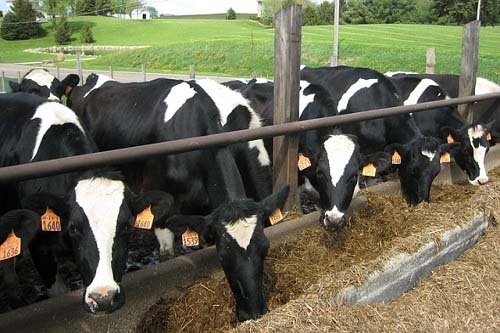
1. Myth – Use of oxytocin for milk letdown in dairy animals makes them infertile and also milk obtained by injecting oxytocin is harmful for human consumption.
Fact – Oxytocin is a cyclic nano-peptide hormone which is synthesized in hypothalamic neurons and released from the posterior pituitary gland. Massaging the teats with hands or suckling by the calf induces a natural reflex in the animal which sends signal to the brain and thus secretes the milk letdown hormone – oxytocin. This hormone is then carried to the udder where it acts on muscle cells to squeeze milk out of the milk-secreting tissue. However, in case of death of calf or in order to produce more milk quickly, dairy farmers use injectable oxytocin exogenously. Whether secreted endogenously or administered exogenously, it produces the desirable effect within 2-6 minutes, as its half-life in blood is only 0.55-3.6 minutes and then it gets rapidly metabolized into inactive products. If at all oxytocin is secreted in the milk, it is unstable at room temperature and traces of oxytocin would be inactivated simply on storage and boiling of milk. By the way, if such milk is consumed by human beings, it is rapidly degraded by gut enzymes and thus does not reach blood circulation in biologically active form. Thus, there seems to be no harm in consuming milk from oxytocin-treated dairy animals. Recently, a study conducted by National Dairy Research Institute (NDRI), Karnal, Haryana, has also pointed out that the use of oxytocin at normal dose (1-3 IU per milking) for milk letdown has no side effects on the reproductive health of animals, unless it is used in very high doses for long time.
2. Myth – Before parturition, pregnant animal should be fed with extra calcium supplements in last trimester in order to take more milk after calving.
Fact – According to National Research Council (NRC), the calcium requirement of a dry cow (body weight 500 kg) is 33 g/day in last 2 months of pregnancy. Most of the dry cow rations contain sufficient amounts of calcium to fulfill this requirement. So if we will feed extra calcium supplements during this period, the calcium demand will be met entirely by passive diffusion from the intestinal tract, thereby making the calcium homeostatic mechanisms inactive. This will disturb the normal processes of calcium absorption from the gut and bone resorption during the lactation period when there will be heavy demand of calcium in blood for production of colostrum (about 6.5 g for 1 kg) and milk (about 3-4 g for 1 kg). Further, at calving, in a single milking, there is an approximate loss of 2.3 g and 2.0 g of calcium in 1 Kg of colostrum and 1 Kg of milk respectively. This situation can make the animal too much prone to calcium deficiency and milk fever, thus affecting the economy of farmer. Hence, instead of feeding extra calcium supplements prior to calving and wasting money on it, farmers should feed about 100 g of good quality calcium to lactating animal only after calving for optimum production as well as for prevention of milk fever.
3. Myth – Before parturition, pregnant animal should be fed more oils or desi ghee in diet (in last trimester) for easy and comfortable calving as well as for production of more milk after calving.
Fact – Before parturition, dairy animals with optimum body condition score (BCS), body weight and health status don’t require excess of fats and oils in addition to their basal diets especially in terminal stages of gestation. If we will feed more fats or oils to animals with optimum BCS (3.25-3.75), they will be over-conditioned (BCS ≥ 4) leading to about 3.3 times higher risk of developing milk fever after calving than the normal animals. However, if BCS falls below 3.25 or pregnant animal is weak or emaciated, then their regular diets may be supplemented with some fat source. In this context, various fat sources such as desi ghee, whole flaxseed, mustard oil, soybean oil, sunflower oil, by pass fat etc can be used. Since type of fat has no effect on the health of animal, so instead of giving highly expensive desi ghee, mustard oil can be used with good results, as it is cheaper and easily available. According to a study conducted by NDRI Karnal, Haryana, the diet of a murrah buffalo during transition period can be supplemented with approximately 200 g of mustard oil daily to improve the milk quality and calf birth weight.
On the other hand, after parturition, by pass fat turns out to be a best source of fat in the diet of dairy animals to alleviate problems of negative energy balance without adversely affecting the dry matter intake and rumen fermentation. By pass fat supplementation also gives additional benefits such as increase in milk yield, fat-corrected milk yield, efficiency of nutrient utilization, post-partum recovery of the body weight and BCS, and reproductive performance of the dairy animals. Many workers have reported approximately 200-300 g by pass fat supplementation in the daily diet of the lactating crossbred cows. On the basis of milk production, by pass fat can be supplemented at the rate of 10 g/head/kg milk production and 20 g/head/kg milk production in lactating cows and buffaloes respectively.
4. Myth – After parturition, milking of animal should be avoided until whole placenta comes out and also colostrum obtained on first day should be buried in the soil.
Fact – Bovine colostrum is a rich source of fats, proteins, peptides, vitamins, minerals, hormones, growth factors, cytokines and nucleotides. Among proteins and peptides – it contains α-lactalbumin, β-lactoglubulins and immunoglobulins (IgG) which provide passive immunity to the neonatal calf against various infections. Hence farmer must allow calf to suckle within half an hour after parturition which will be useful in two ways – 1.) It will stimulate the development and growth of calf in addition to protection from various infections 2.) Suckling by the calf will stimulate the release of endogenous oxytocin from pituitary gland of dam which will help in timely expulsion of placenta and thus it will minimize the chances of endometritis. So there will be no need to waste money on costly oxytocin and intrauterine injections for milk letdown and septic metritis respectively. Also regular milking of lactating animals help in checking mastitis, metritis-mastitis syndrome etc.
5. Myth – After parturition, technique of incomplete or partial milking should be adopted for first few days for prevention of milk fever in cattle.
Fact – Incomplete milking should not be recommended as neither it prevents the animal from milk fever nor it increases its milk yield, rather it increases the chances of mastitis and reduces the peak milk yield. Moreover, till date no scientific study proves the positive effect of incomplete milking on the incidence of milk fever. For prevention of milk fever, subacute hypocalcemia and hypogalactia in early lactation, farmers must adopt the following management practices:
- Farmer must supplement the diet of pregnant cattle with approximately 50 g ammonium chloride (Thikri Nausadar) per day starting from 3 weeks before parturition till the day of calving. This will make the DCAD (dietary cation-anion difference) negative and animal will enter into physiological stage of systemic acidosis, which can prevent from milk fever or calcium deficiency. During this time, buffers must not be used in anionic salt rations, as it will counter the effect of DCAD.
- Pregnant animal can be given vitamin D3 either in the form of injection or rumen-bypass vitamin orally before calving for prevention of milk fever.
- During the dry period, the daily calcium intake of animal must be limited to < 20 g to prevent milk fever.
- As per NRC, the recommended magnesium content for pregnant cow should be 0.16% of dry matter intake. Less than this limit of Mg will increase the chances of milk fever.
- Pregnant animal must not be fed roughages from pastures over-fertilized with potassium, as high K+ will decrease the uptake and absorption of Mg and will predispose the animal to milk fever.
- Pregnant animal should not be fed with high calcium (> 100 g/day) and phosphorus diet (> 80 g/day) during the pre-partum period.
- Oral calcium preparations can be given to parturient cows in about 3-4 doses distributed evenly during the period from 12-24 hours before calving to 24 hours after calving.
6. Myth – Many dairy farmers practice knuckling technique for milking the animals, and they just drop first few strips of milk on the floor for checking its milk quality.
Fact – As per scientific recommendation, the best method for milking of animals is–full hand milking followed by stripping. In full hand milking (Fig 1), teat is encircled with index finger and thumb at the junction of teat and udder, the other portion of teat is closed with remaining fingers and pressed on all sides against the palm. Stripping (Fig 2) consists of pressing the entire length of teats by seizing at its base between the thumb and forefinger, and drawing them down to make the milk flow down in streams. The combination of full hand milking and stripping method causes minimal injury to the teat tissue as compared to knuckling (Fig 3) in which thumb is pressed against the teats, and the teats lie in between thumb and fingers. Thus, in knuckling there will be uneven pressure on the teats, which may injure the teat tissue thereby predisposing to mastitis. Also at the start of milking, drawing milk strips directly on the floor will help in the growth of microbes, which will predispose all the animals to mastitis, metritis or other infections. Hence milking should be carried out quickly and quietly under clean and hygienic conditions without spilling it over ground. After completion of milking, practice teat dipping in 1% iodine dip cup or chlorhexidine solution, and make sure the animal must not sit for at least half an hour.

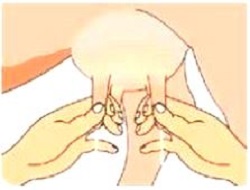

7. Myth – Cow milk is better than buffalo milk in terms of nutritional quality and other health benefits especially for children and heart patients.
Fact – The average fat content of buffalo milk (about 6.71%) is more than the cow milk (about 4.39%). For most of the heart problems, cholesterol is considered as the main culprit. It is always a misconception that higher fat content of buffalo milk contributes higher cholesterol. In fact the cholesterol content in cow milk is much higher – about 317-413 mg/100g fat in crossbred and 303-385 mg/100g fat in desi cow. In buffalo milk, it is only 235-248 mg/100g fat. Therefore rather than cow milk, consumption of buffalo milk containing the same fat content as cow milk is much better for children, heart patients, hypertensive and health conscious people.
8. Myth – Sometimes farmers practice of making an animal to drink its own or other animal’s milk in order to treat chronic anorexia or convalescent disease or for taking more milk after parturition.
Fact – The above said myth is totally wrong as milk can be digested only by young calves in which enzyme “Rennin” is produced in their stomach only up to the age of three months. In young calves, milk directly enters abomasum through esophageal grove bypassing the rumen, and gets digested there. After three months of age, rennin production stops and animal start eating green fodder. So during chronic anorexia, when we drench the animal with whole milk, it will collect in the rumen, and its fermentation will occur leading to disturbance in pH and ruminal microflora. This will further upset the digestive system resulting into prolonged anorexia instead of recovery. Also it should be noted that making the recently calved animal to drink its own milk will not help in getting more milk from that animal in that lactation period. Rather it may cause alkaline indigestion, bloat and permanent anorexia.
9. Myth – Pregnant and lactating animals must not be vaccinated against Foot and Mouth disease (FMD) and Haemorrhagic Septicemia (HS) diseases, as vaccination causes abortion and decreases milk yield.
Fact – In India, at present central government has launched NADCP (National Animal Disease Control Program) for mass vaccination of cattle and buffaloes along with polyurethane 12 digit tagging for identification. The main aim of this program is to eradicate FMD from our country. According to an estimate, India is losing Rs 20000 crores annually due to dreaded FMD in cattle and livestock. The vaccines given for FMD and HS do not cause loss of milk yield or abortion in animals. The most important thing is to prevent the pregnant and lactating animals from stress due to vaccination by adopting various measures such as – 1) vaccinate the animals during early morning or late evening hours in summers to avoid stress 2) provide more concentrate feed to animals to avoid energy deficiency 3) ad-libitum availability of clean water for drinking 4) avoid any transportation stress etc. By following these points, we can not only prevent our livestock from these diseases but can also produce safe livestock products which can earn a good value from the international export market.
10 Myth – The milk obtained from animal suffering from achromotrichia is condemned, and not fit for drinking as it may cause similar condition or leprosy in humans if consumed.
Fact – Achromotrichia (depigmentation of coat colour) occurs mostly in buffaloes due to copper deficiency. Copper is an essential trace mineral which is involved in various metabolic processes. Deficiency of copper in ruminants cause achromotrichia, diarrhea, decreased weight gain, unthrifty appearance, anemia, anestrus, repeat breeding, impaired wool quality, spontaneous fractures, lameness (epiphysitis) and demyelinization (enzootic ataxia of sheep and goats, or swayback). Hence farmers must be recommended that on dry matter basis, minimum dietary copper concentration should be 4-10 ppm for cattle, 5 ppm for sheep and 7 ppm for merino sheep. Achromotrichia is a reversible condition and can be treated easily. The consumption of milk obtained from animal suffering from achromotrichia never causes achromotrichia, leprosy or any other health hazard in humans. So rather than culling, such animals need to be treated as per the advice of a veterinarian.
From the above discussion, it is concluded that above listed scientific facts, if followed in letter and spirit, can prevent economic losses which could be helpful for farmers especially those belonging to rural background with poor families.
References
- Aneja, R.P., Mathur, B.N., Chandan, R.C. and Banerjee, A.K. 2002. In: Technology of Indian Milk Products. A Dairy India Publication, New Delhi. pp. 49-60.
- Faraz, A., Waheed, A., Nazir, M.M., Hameed, A., Tauqir, N.A., Mirza, R.H., Ishaq, H.M. and Bilal, R.M. 2020. Impact of oxytocin administration on milk quality, reproductive performance and residual effects in dairy animals – a review. Punjab University Journal of Zoology. 35(1): 61-67.
- Ferneborg, S. 2010. Calcium homeostasis at calving in cows milked prepartum. Swedish University of Agricultural Science, Department of Animal Nutrition and Management, Uppsala 2010.
- Guard, C. 1999. Retained placenta: causes and treatments. Advances in Dairy Technology. 11: 81-86.
- Ijaz, A. and Aleem, M. 2006. Exogenous administration of oxytocin and its residual effects. Pakistan Veterinary Journal. 26(2): 99-100.
- Maas, J. 2009. Copper deficiency and toxicity in ruminants (Proceedings). Advanstar Communications Inc., US.
- McGrath, B.A., Fox, P.F., McSweeney, P.L. and Kelly, A.L. 2016. Composition and properties of bovine colostrum: a review. Dairy Science and Technology. 96(2): 133-158.
- Naik, P.K. 2013. By pass fat in dairy ration – a review. Animal Nutrition and Feed Technology. 13(1): 147-163.
- Olson, W.G., Linn, J.G. and Hanson, J.O. 1990. Milk fever in dairy cattle. Report published by University of Minnesota, Agricultural Extension Service, St. Paul, Minnesota 55108.
- Singh, P. and Chatli, M.K. 2011. Cow milk vs Buffalo milk: which is better? Indian Dairyman. 63(4): 58-63.
- Thilsing-Hansen, T., Jorgensen, R.J. and Ostergaard, S. 2002. Milk fever control principles: a review. Acta Veterinaria Scandinavica. 43(1): 1-19.
- Thul, M.R., Oberoi, P.S., Kumaresan, A., Gonge, D.S., Bharti, P., Japheth, K.P. and Chandrasekar, T. 2017. Effect of mustard oil supplementation during transition period on milk composition and calf birth weight in murrah buffaloes. International Journal of Livestock Research. 7(7): 132-139.
- Yamagishi, N., Dohmae, H., Shirato, A., Sato, J., Sato, R. and Naito, Y. 2000. Effects of oral administration of “rumen-bypass” vitamin D3 on vitamin D and calcium metabolism in periparturient cows. Journal of Veterinary Medical Science. 62(4): 403-408.


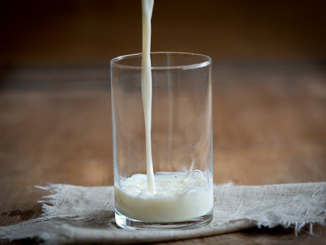
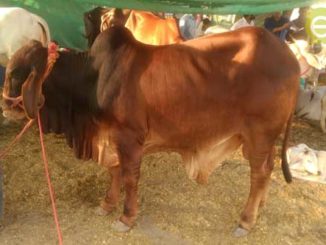
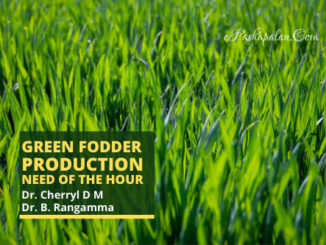

Be the first to comment